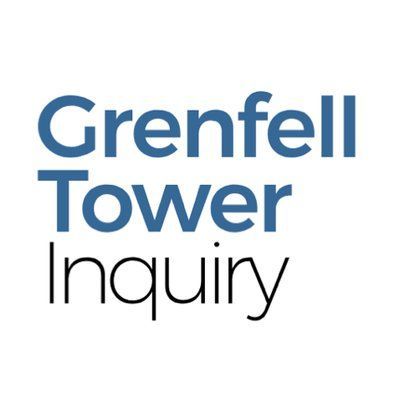- News and events
- Latest news
- Response to the publica...

 Responding to the publication of the Grenfell Tower Inquiry Phase 2 Report, Cheshire Fire and Rescue Service’s Chief Fire Officer and Chief Executive, Alex Waller, said:
Responding to the publication of the Grenfell Tower Inquiry Phase 2 Report, Cheshire Fire and Rescue Service’s Chief Fire Officer and Chief Executive, Alex Waller, said:
“Along with fire and rescue service colleagues across the country, today we remember the people who lost their lives on 14 June 2017. Also in our thoughts are their loved ones and our emergency services colleagues who responded so courageously.
“Since 2017 we have undertaken a significant amount of work to strengthen our policies and procedures to prevent and deal with fires in high-rise residential buildings. Through our Community Risk Management Plan, this work remains an absolute priority.
“It will take time for us to give full and careful consideration to the inquiry recommendations that are relevant to the fire and rescue service. We will continue to play whatever role we can to ensure the events of, and leading up to, that night never happen again.”
A high-rise building is defined nationally as one that measures 18 metres in height, to the floor level of the uppermost storey - typically the sixth or seventh floor.
In Cheshire there are 28 residential buildings that meet this definition. Only three have been found to have unsafe cladding and these are in the process of being remediated.
To ensure the safety of residents in all high-rise buildings, Cheshire Fire and Rescue Service has implemented improvements across a range of areas since 2017 and the publication of the Inquiry’s Phase 1 report in October 2019.
part-funded through Cheshire Fire Authority the installation of sprinkler systems in a total of 18 high-rise residential buildings in the county. Research shows that sprinklers are 100% effective at controlling fires in flats
reviewed fire safety measures in all 28 high-rise residential buildings and strengthened our programme of ongoing inspections. Fire safety inspectors have undertaken additional specialist training on high-rise buildings and exterior cladding. The inspections also serve to provide operational crews with detailed information about specific risks in those buildings
responded to the new Fire Safety (England) Regulations 2022 by enabling those responsible for high-rise residential buildings to share with us their plans, details of external wall treatments and firefighting equipment, which now includes the mandatory installation of sprinklers in new high-rise buildings. Owners must also report any building faults through our website.
introduced a ‘immediate building evacuation’ (IBE) procedure when it is clear to an incident commander that a fire is spreading in a high-rise residential building and is it is no longer safe for residents to ‘stay put’. Declaring IBE would trigger the turnout of sufficient vehicles and resources to manage an evacuation quickly and safely. This procedure has been tested with our 999 control room, along with arrangements for handling a large volume of calls, and is in line with national operational guidance published after the Inquiry’s Phase 1 report
running enhanced and regular training for incident commanders and firefighters on dealing with fires in high-rise buildings. These include several live exercises with neighbouring fire and rescue services and our 999 control room at high-risk sites and at our Training Centre, which opened in 2021 and includes a high-rise training scenario.
created a dedicated evacuation unit and information packs for crews and investing in smoke hoods for evacuees in the event of a building needing to be evacuated
invested in specialist firefighting equipment such as curtains to contain smoke at doorways, 51mm hoses and riser extension hoses better suited to relaying water in high-rise settings, straps to make hoses easier to carry up staircases and additional thermal imaging cameras. A new high-reach extendable turret (HRET) vehicle also strengthens our high-rise firefighting capability
investment in new radios and ‘repeaters’ to strengthen radio communications between crews in structures where signal might be compromised.
We have re-established our High Rise Working Group to review the recommendations from the Inquiry Phase 2 report, to ensure the continued effectiveness of all these measures and address any new actions.
Detailed fire safety advice and videos for residents living in high-rise buildings can be found here - High rise homes, flats and apartments